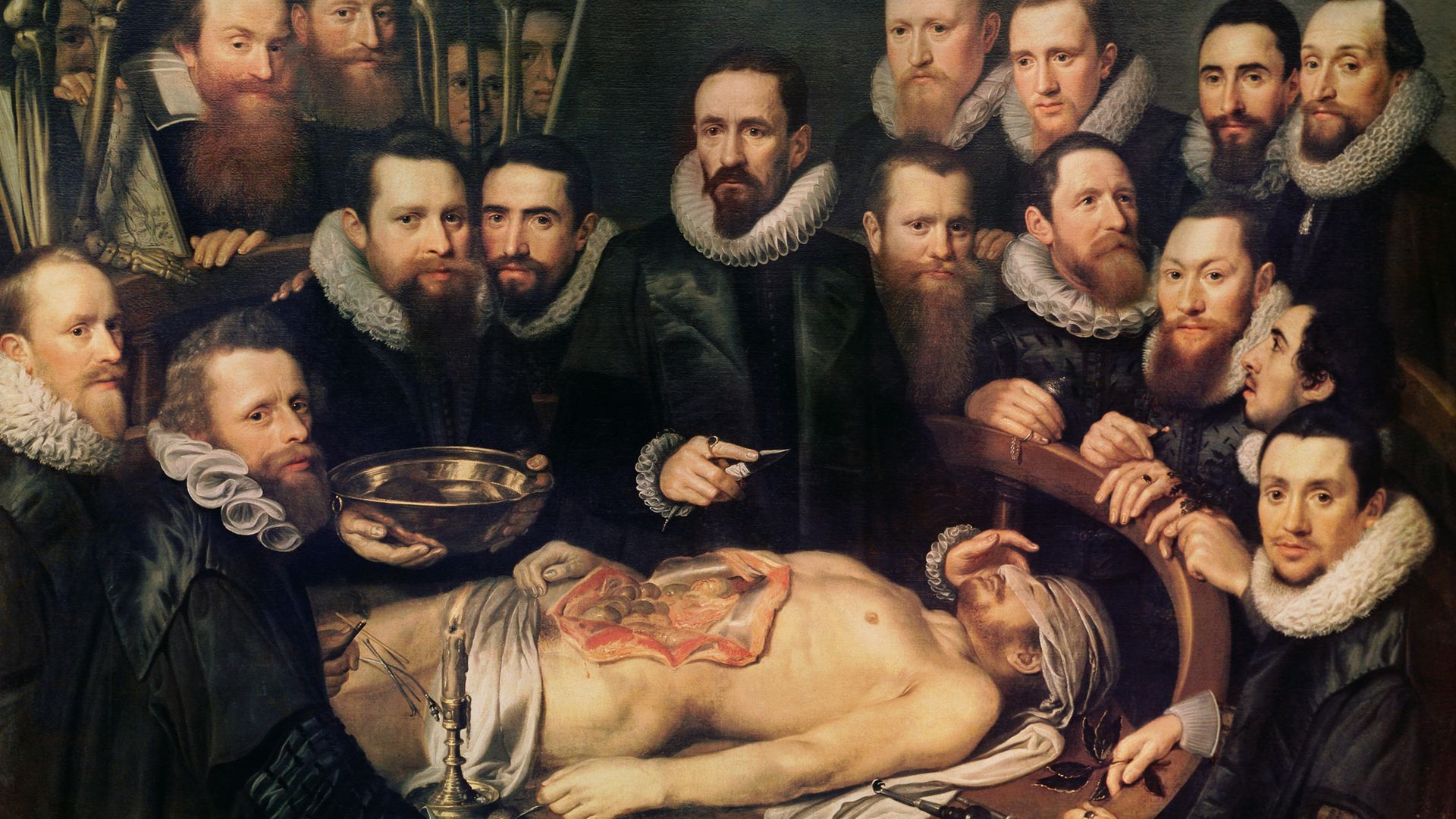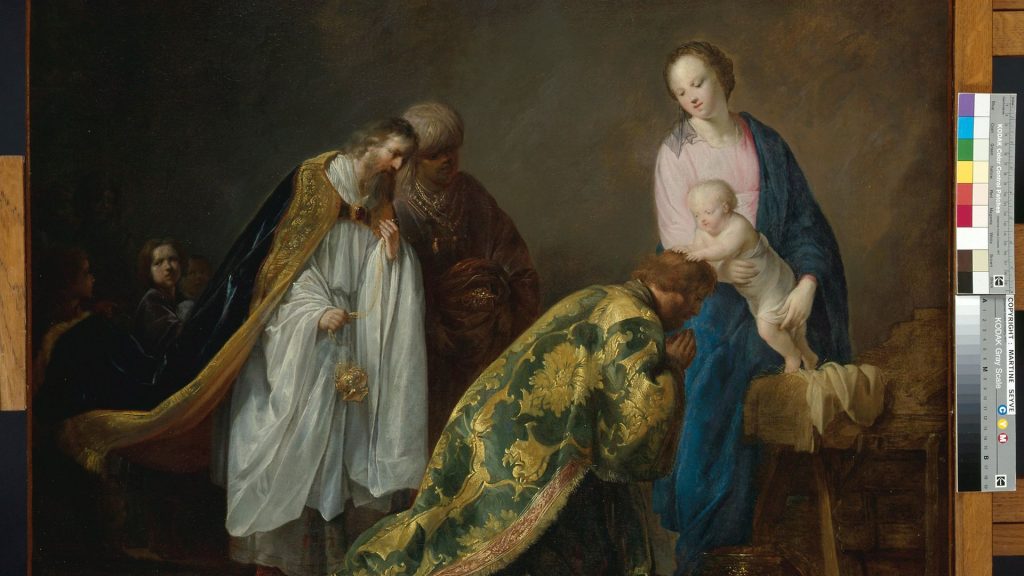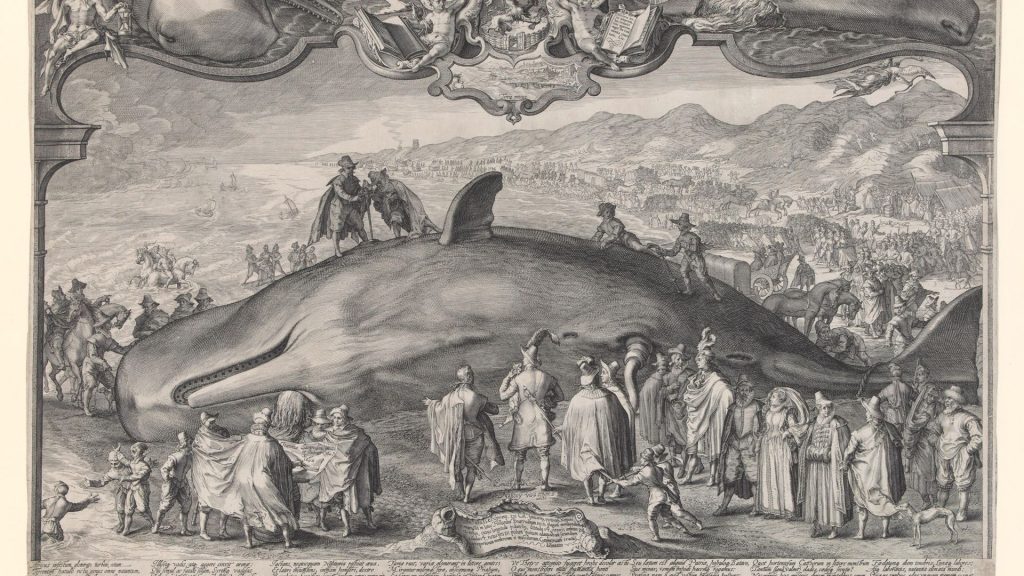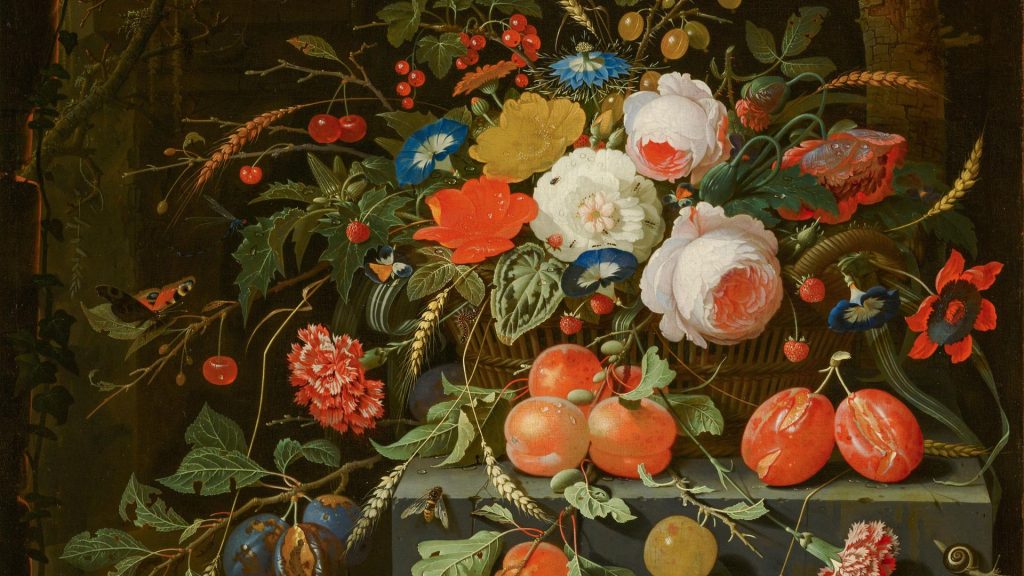
An intriguing new exhibition allows the public to view paintings from the Golden Age of Dutch art while experiencing the smells associated with them.
A painting is a painting is a painting. You look at it. It might mesmerise you; Jackson Pollock. Make you smile ironically; Rene Magritte. Lift your soul to the heavens; Tiepolo or, a Damien Hirst dot, have you stifling a yawn.
Name your painter, match the emotion. But when it come to the five senses, sight, smell, hearing, taste, and touch, paintings are only about sight.
Or are they? An exhibition entitled, Fleeting – Scents in Colour at the Mauritshuis, in the Hague, is attempting to match smell to painting, to bring to olfactory life the sweet perfumes and foul odours of the 17th century.
It is a bold idea, delightful to look at and intriguing to inhale.
When the museum re-opens there will be 50 paintings which quite obviously have smell as a theme; shops replete with over-ripe fruit, effulgent vases of roses, drunkards smoking that new-fangled pleasure, tobacco, a baby’s bottom being wiped with gusto, criminals hanging from gallows, their rotting corpses picked at by rats and crows.
It’s easy to imagine how they smell but how to conjure up the sweetly spicy aroma of a pomander, the malodorous stench of a canal side privy, or the crisp dry bouquet of household linen?
Of the 50 paintings, there are eight with inhalers, which, put simply, have a funnel a little like a lily trumpet which reaches up from a box on the floor beneath the painting. The onlookers press a lever with their foot and the fumes waft up. Now, what you see is what you sniff.

It helps that the paintings exemplify the Dutch style of the 17th century with their precision and detail which creates an atmosphere so beguiling that it is easy to imagine stepping into the frame and starting a conversation with a bystander.
Pieter de Hooch (1629-1684) captures the spotless cleanliness of a home with Interior with Women in front of a Linen Cupboard (1663) and exudes the freshness of a recent wash. Breathe deep. What gladdens the nose is a 17th century recipe for blending perfumes such as rosebuds, cloves and musk in scented sachets which were placed with laundry. (My verdict at the end of the piece).
The open door at the rear of the painting gives a glimpse of the canal outside, where it smelt very different – as we discover in View of the Oudezijds Voorburgwal with the Oude Kerk in Amsterdam (ca 1670) painted by Jan van der Heyden (1637 -1712).
There is a sense of order about the scene; the grand church, the gabled houses, the friends meeting on the canal side, labourers unloading barrels from a barge. The sedate progress of two swans.
But the stench! By the bridge is a small wooden privy which emptied into the canal, adding to an already noxious mess of sewers and drains. Next to the privy a street cleaner is sweeping the horse manure into piles while on the canal bank a woman is washing her laundry in the filthy water.
The fact is, that despite the Dutch reputation for cleanliness, cities such as Amsterdam and Leiden – and often the people – stank.
The canals were awash with the discharge from the textile mills, the dye from the tanneries, the effluent from breweries and sugar refineries. As well as the contents of privies, sewers and drains, dead animals and rotting vegetables polluted the atmosphere. The smell was unbearable during the summer months and so toxic that it often tarnished the family silver indoors and coated the gilt-leather wall hangings.
There can be no doubt why Stinksloot (Stink Ditch) in Amsterdam was so called nor Stink Alley in Leiden which was home to Mayflower elder William Brewster for several years before he and his fellow pilgrims undertook the great voyage of 1620.
We can breathe in what he and his family endured with a press of the dispenser. (Again, verdict below).
Happily these odours no longer plague the canals and smells, once familiar 300 years ago, have passed into history as industries have disappeared.
For example, Jacob van Ruisdael (1628/9-1682) depicted green meadows striped with what seem to be regular white lines in Views of Haarlem (c.1670 – 1675 ). This was a bleaching field just outside the city of Haarlem, where textiles were transformed into a bright white by being soaked in sour buttermilk and boiled ash, and stretched out in the fields.
It is a pleasing scene, and was in fact, a tourist attraction, but the reality was rank, a stark contrast to its apparent Arcadian charm, the clear blue sky and the rooftops of Harlem in the horizon.
Luckily, there was a sweet smelling solution to such foulness – the pomander, a perforated container filled with highly aromatic spices which could be worn hanging on a chain from the neck or on a belt around the waist.
Derived from the French pomme d’ambre, or amber apple, there are three pomanders on view, all finely crafted in silver, with compartments which fold out rather like peeling an orange. They were filled with aromatic substances such as rosemary, cloves and musk, in fact, anything which smelt nice – sandalwood, lemon peel and rosewater as well as a dash of cinnamon and saffron.
Another key ingredient was ambergris, a substance produced in the intestines of sperm whales, where it coagulates around the animals intestines and protects it against the sharp, undigested remains of squid.
We discover the distinct aroma of this strange substance after joining the fascinated crowds in an engraving by Jan Saenredam (1565-1607), who have come to peer at, and even clamber on, the huge, putrefying mass of a dying whale in Stranded Whale near Beverwijk, (1602).

One leading 20th century chemist, an expert in perfumery, described the aroma as “humid, earthy, faecal, marine, algoid, tobacco-like, sandalwood-like, sweet, animal, musky and radiant” which covers most options. Today it is very rare and very expensive so the Mauritshuis have used a synthetic version.
Pomanders were not just a fashion accessory but were also believed to protect against disease, as one shaped in the form of a skull with the inscription heeden leven / morgen doot (‘alive today, dead tomorrow’) might suggest.
In the gruesomely explicit dissection of a body in Anatomy Lesson of Dr Willem van der Meer painted in 1617 by the Delft painters Michiel and Pieter van Mierevelt one of the observers (to the right of the picture) has a pomander hanging from a chain attached to a ring which he wears on his finger. This is not vanity, he trusts it will protect him from the noisome germs arising from the decaying cadaver.
But life in the 17th century was not all about fighting off vile odours. One of the most evocative genre of images is the still life, and here is a lush basket of burgeoning flowers and over-ripe fruit in Still Life of Flowers and Fruit from 1670 by Abraham Mignon (1640-1779).
The flowers glow from the picture frame, insects flutter around the fruit which is starting to rot, ants creep over the melon which has been cut open and is beginning to suppurate.
Everything about A Grocer’s Shop (1717) by Willem van Mieris (1662-1747) invites the viewer to lean in and sniff to appreciate the cornucopia of dried fish and fruit which jostle for space on the shelves with coffee, tea and tobacco. There are new and exotic treats for the shopper such as pepper, clove, cinnamon and nutmeg, which have only recently been imported by the Dutch East India Company from exotic far distant locations.

The scents of the Catholic church – the incense, the burning candles – were banned by the Calvinist Dutch, who eschewed all pageantry and pomp, but the Bible brings its own stories. In The Raising of Lazarus (1631) Jan Lievens (1607-1674) painted Christ’s miracle of bringing Lazarus back to life.
In an eerie scene Lazarus’s sister Martha and Jesus look on as Lazarus raises his arms from the coffin. He has been dead for four days and judging by their expressions the noisomeness of the corpse is overpowering.
We are left to imagine that noxious moment, but in another familiar Bible story, Pieter de Grebber (1600-1652) portrayed The Adoration of the Magi, (1638) in which the youngest king carries a box of myrrh, a bitter substance made from gum resin which was used as an embalming oil and is a symbol of death. It is this bitterness which floats up into gallery.
Does this ambitious project work? Two dispensers were sent to previewers. The one which was meant to capture the stench of van der Heyden’s canal, was more fusty than filthy. The other captured the delicate, lightly spiced fragrance of the pomander delightfully. An olfactory pleasure, strong enough to ward off the evil vapours of, say, a corpse on a gallows. Not be sniffed at.
Fleeting – Scents in Colour is at the Mauritshuis, the Hague, Netherlands. When the museum reopens the exhibition will run until August 29. During lockdown viewers will be able to buy a smartly displayed box with four mini dispensers to use in conjunction with a virtual tour










